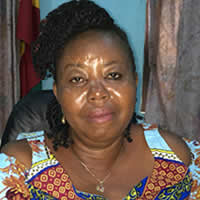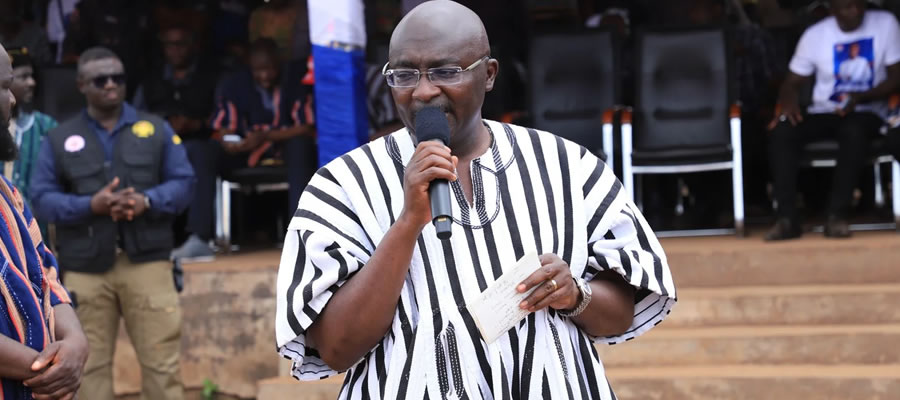

Size
Ejura-Sekyedumase Municipal currently has a population of 88,753. Between 1984 and 2000, the population increased from 60,997 to 88,753. However considering the rate of growth, it could be deduced that the population increases at a decreasing rate. The increase in the absolute figures is attributable to the fact that serves as the immediate- tie between the north and the south so harbours most northern extracts that are in search of greener pastures. It also worth-mentioning that Ejura-Sekyedumase served as the major food basket during the 1983 famine therefore attracted people from all walks of life.
Growth Rates
There has been a considerable increase in the rates as to the various censal years. However, the rate of increase in comparison to the national figure and the regional one are different from the area under study. Whereas both increases invariably, the under study has a growth rate that increases from the initial point and thereafter drops, thus 4.2% (1960) to 3.6% (1970-1984) and 1.8% between 1984-2005. The sudden drops in the rates between 1984 and 2004 could possibly be due to the incidence of migration which is prevalent. The table below presents the various intercensal growth rates.
Age-Sex Structure of the Population
The age-sex structure of the population is typical of the rural Ghanaian situation. The population pyramid has a broad base which tippers to the top. It could be realized that males slightly outnumber their female counterparts. Males constitute 51.7% whilst females constitute 48.3 %. This is the opposite of the national figures (males- 49% and females-51%). Within the female populace, 39% are within the reproductive age group (15-49 years). 53% of the population fall within the economic active group, 40% are within the school going age where as 7% constitute the aged. This brings the dependency ratio to 1:0.89. This implies every 100 persons cater for themselves and an additional 89 persons.
Rural -Urban Split and Density
Population is unevenly distributed in terms of urban and rural consideration. Out of the 130 settlements, only three are urban areas with the rest being rural settlements. This gives a rural status. It is divided into five zones, Ejura Urban Council, Sekyedumase Area Council, Dromankuma- Bonyon Area Council, Kasei Area Council and Ebuom Area Council. It is estimated that more than 40% of the total populace are resident in the three major urban centres- Ejura, Sekyedumase and Anyinasu with the remaining 60% in the rural centres.
The three urban centres with a total land size of 760sq.kms are densely populated in comparison to the rural areas which is sparsely populated given it total size of 1022.2sq.kms. The Muncipality has population density 50 which is below the national population density of 90. The table below gives the population density.
Spatial Analysis
At the national level, the colonial spatial structure has not changed significantly. It is characterized by polarization without equity and distribution of services is skewed and urban biased. It is the replica in the where the rural areas are greatly depressed with weak linkages between service centers and their hinterlands. Towns therefore do not fulfill their roles as engines of growth and providers of services to the hinterlands or villages. Analysis of settlements system and spatial linkages was made to provide an understanding of the space economy and an insight into the adequacy of the functions performed by the various settlements. It would also help us to establish the hierarchy of settlements as well as their distribution in space which would provide basis for injecting equity and efficiency into the space economy.
Population Distribution by Settlements
The assembly has a total of about 130 settlements. By demographic definition, there are about three towns with population of more than 5000, which can be classified as urban. These are Ejura the capital, Sekyedumase and Anyinasu. The skewness in the distribution of population in favour of the urban centers has an adverse effect on the provision of social, economic and technical infrastructure which normally need a required threshold population to justify its provision. From the analysis, 43.1% of the district population lives in the urban areas and about 57% live in the rural areas as against 63% rural and 37% urban for the nation. This indicates that large proportion of the population live in the rural areas where poverty, deprivation, illiteracy and other social vices are more pronounced. The population distribution of the settlements is shown on the map below.
Ejura is the only first order settlement with population of 33907. Sekyedumase comes out as the second order settlement with a population of about 11371. Four towns: Anyinasu, Hiawoanwu, Dromankuma and Kasei follow as third order with population ranging between 5100 – 2000. From the diagram, it could be seen that these towns are concentrated in the eastern part of the district. The western part is however, characterized by dispersed small settlements except Sekyedumase. This affects the distribution of services as the needed population thresholds for the provision of high order services are not met.
Location and Distribution of Services
An important issue in dealing with spatial organization is the distribution of services. This together with conditions of communication and transportation system and social factors determine the access the people have to basic services. The analysis of the service distribution was made or undertaken using the scalogram method/technique. This is the matrix presentation of the functional structure of settlements. This technique enables the determination of hierarchy of settlements in the districts and hence the nature of spatial integration. About 40 services were considered in the analysis covering all the sectors of the economy, transport and communication, security, public administration, education, health, agriculture etc. The type of services and their distribution in the major 50 settlements.
Hierarchy of Settlements in Terms of Functions
From the scalogram analysis, the variety and level of services in each of the settlements was determined. Based upon these, the settlements have been ranked in a hierarchical order. The analysis revealed a weak linkage between population distribution and service distribution and skewness in the distribution of service to the detriment of the rural areas. Frante the 6th highest populated settlement, ranked (fourth) 4th in service distribution has only 10 out of the 40 services considered. Hiawoanwu, which was ranked seventh in terms of population distribution of settlements, goes to third order settlement by service distribution has 14 out of 40 services considered. In terms of spatial equity, it was revealed that the services centers are concentrated in the eastern part of the district where towns like capital Ejura, Hiawoanwu, Dromankuma, Kasei, Aframso are found.
The Assembly as a whole is deficient in service facilities. Apart from Ejura which is the capital and Sekyedumase with total centrality of 1526 and 993.1 respectively, the rest of the settlements inadequately have certain services. This reveals that the variety, level of quantity and distribution of services in the area not satisfactory. To objectively determine the level of deficiency in service distribution, accessibility analysis was made using the accessibility analysis techniques.
Date Created : 11/18/2017 5:50:58 AM











 facebook
facebook
 twitter
twitter
 Youtube
Youtube
 +233 593 831 280
+233 593 831 280 0800 430 430
0800 430 430 GPS: GE-231-4383
GPS: GE-231-4383 info@ghanadistricts.com
info@ghanadistricts.com Box GP1044, Accra, Ghana
Box GP1044, Accra, Ghana